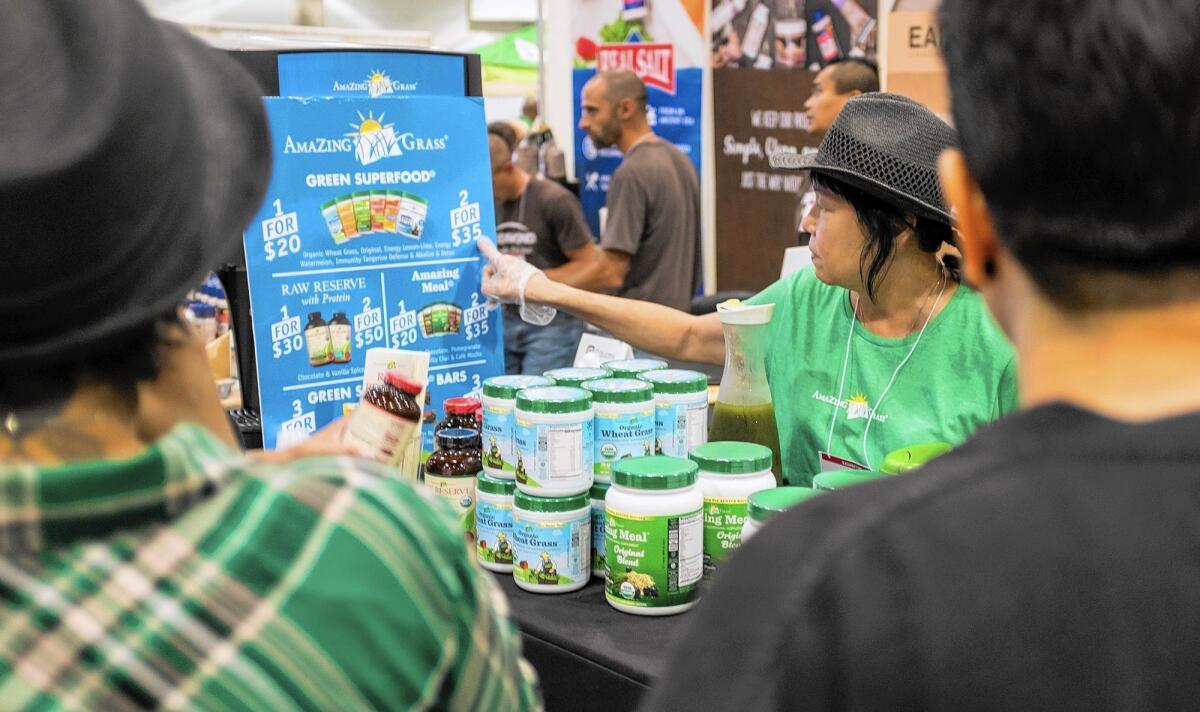Hansen: Where to draw the green line

Every year, Newsweek magazine prints a special “green rankings” report, listing the top 500 companies in the world on their environmental imprint. To justify the analysis, there are fancy sounding methodologies and inscrutable mathematical models.
Newsweek claims that the work represents “one of the world’s most recognized assessments of corporate environmental performance.”
So recently as I stood in the center of the cavernous Los Angeles Convention Center, surrounded by more than 250 environmental companies at the Green Festival expo, the largest and longest-running sustainability event in the United States, I wondered why not one Newsweek winner was in attendance.
Surely out of all those environmental juggernauts one company would want to commingle with the hemp-wearing masses at the Green Festival expo.
Apparently not — not even close. And the reason has nothing to do with size, brand or revenue potential.
It’s that nowadays there are many shades of green.
Green is the new black, as it were. It’s simply the hip background color of a corporation’s to-do list, which is filled with checkboxes that add up to an annual report.
Put solar panels atop the company parking garage and let’s move on with real business, they say.
If that sounds unfair, consider this: Newsweek says Boeing is the 23rd greenest company in the U.S. The Clorox Co. is 38th, and Pacific Gas and Electric Co. is 42nd. Yes, that PG&E, whose middle name, unfortunately, is Hinkley.
Dozens of other companies on the list have speckled environmental records.
Inexplicably, ExxonMobil Corp. is the 72nd best green company in the U.S., according to Newsweek. Locally, ExxonMobil runs the large Torrance refinery, which produces one-fifth of Southern California’s gasoline.
In February, a significant explosion at the 750-acre facility injured four workers and resulted in a long list of citations from government agencies. As recently as two weeks ago, state regulators said they were investigating the possible leak of potentially deadly modified hydrofluoric acid, according to Cal/OSHA.
Meanwhile, at the Green Festival, there are companies like Mulberry Love from Malibu, Eco Nuts in Lawndale and Amazing Grass in Newport Beach.
Obviously, these are not top publicly traded companies, but are they greener than PG&E or Exxon?
Have we become so enamored of calling ourselves green that we reward some of the country’s most infamous polluters?
The apparent ease with which large corporations have co-opted the green movement is not lost on small companies trying to make a difference.
Amazing Grass, for example, is not some pop-up AstroTurf builder trying to capitalize on the drought. Since 2002, the company has actually been feeding people plant-based nutrition — that organic, super food based on wheat grass.
“I think that the green hype among big companies is easy to say … but it’s definitely not green in the sense that you would consider their entire company or whole product line green,” said Landon Everson, brand manager at Amazing Grass. “I think a lot of it is a marketing ploy and just trying to get in front of the consumer who demands green.”
This demand has created stiff competition among green food vendors in particular. Years ago when this type of food came out, yes, it tasted pretty much like grass and probably turned your teeth green. But Amazing Grass carries flavors like pineapple lemongrass, pumpkin spice and chocolate.
“We differentiate ourselves mainly through our process,” Everson said. “We have a proprietary process where we actually blend whole foods rather than juice powders. So instead of juicing our product and then dehydrating, we grind up whole food and whole leafy greens, like wheat grass, barley grass and alfalfa.”
It sources the grass from the co-founder’s third-generation farm in Kansas.
The success of small green companies like these adds up. On a global basis, shoppers are willing to spend more on products that are proven to be green.
In 2014, the Nielsen Global Survey on Corporate Social Responsibility reported that 55% of consumers across 60 countries said they are willing to pay more for products and services from companies “committed to positive social and environmental impact.”
However, the growing challenge is that consumers are expecting everything to be inherently green — from the manufacturing methods to labor practices — but that’s not always the reality.
There are trade-offs, even within the overall green movement.
For example, it’s telling that the platinum sponsors of the Green Festival this year were Audi and Volkswagen. On the one hand, they are showcasing their electric cars, but on the other, Volkswagen is reeling from a diesel emissions scandal involving up to 11 million vehicles.
It prompts the question: Can these types of companies change their business models to better satisfy a more eco-conscious marketplace?
Furthermore, one wonders where to draw the green line. Is it the green chemical line of an industrial holding pond or is it the leftover green line of a wheat grass juice cup?
Clearly, green is subjective in today’s world, and as a result, consumers are forced into color blindness.
DAVID HANSEN is a writer and Laguna Beach resident. He can be reached at [email protected].